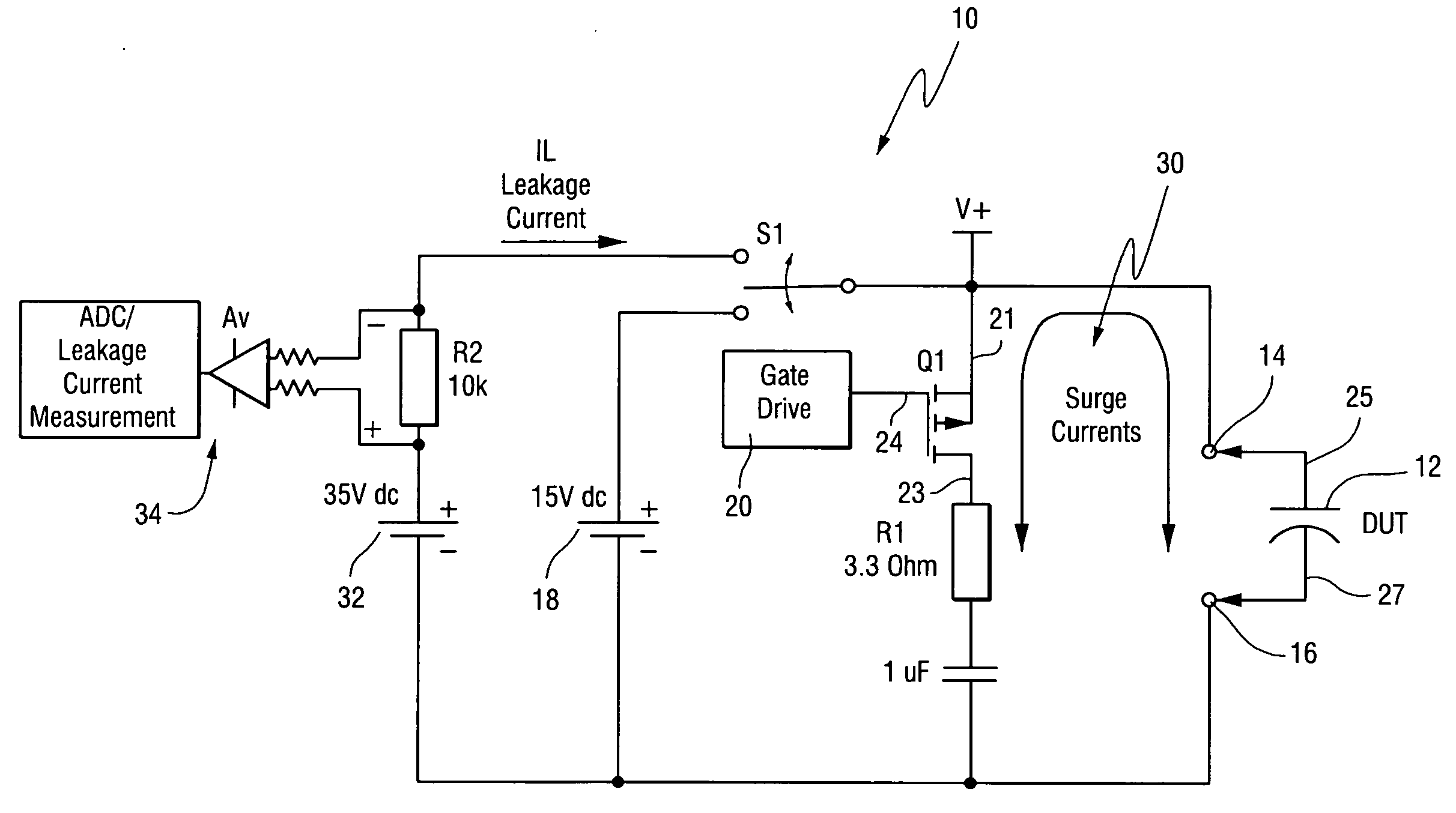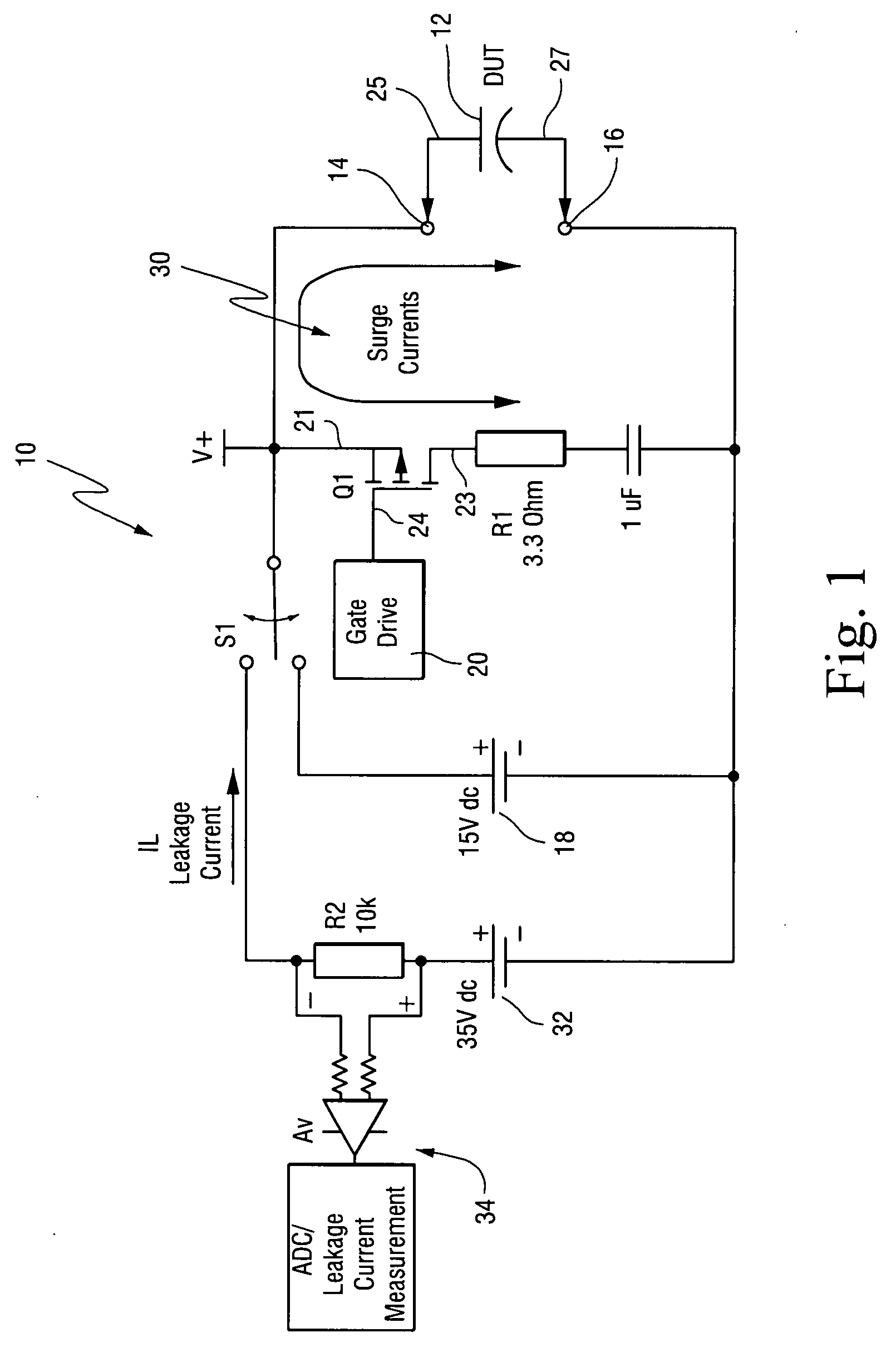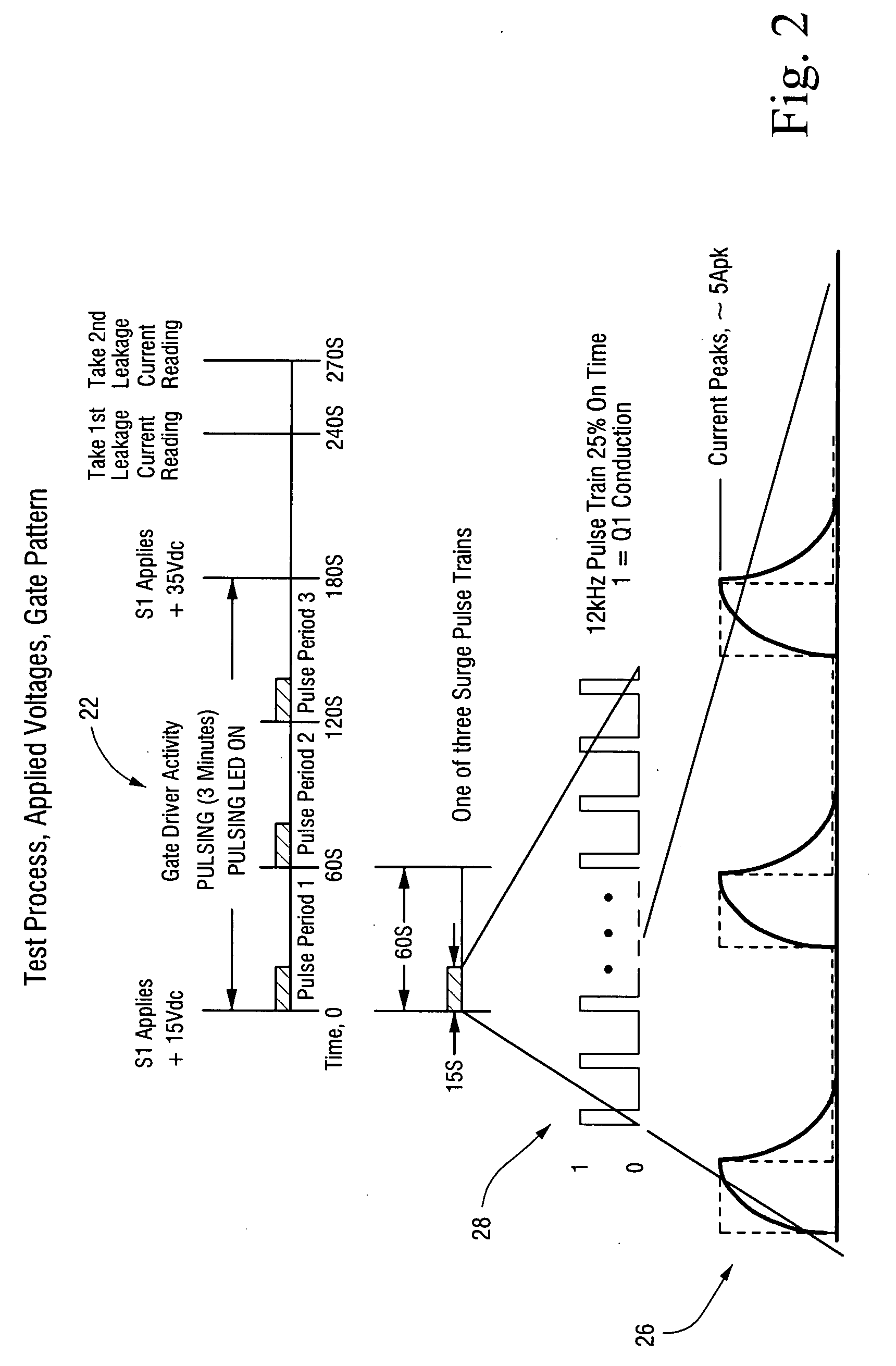Processing tantalum capacitors on assembled PWAs to yield low failure rate
a technology of tantalum capacitors and assembled pwas, which is applied in capacitor manufacture, resistance/reactance/impedence, instruments, etc., can solve the problems of significant man-hours lost to repair and replace costly system parts, high and loss of production, so as to reduce the failure rate of tantalum capacitors
- Summary
- Abstract
- Description
- Claims
- Application Information
AI Technical Summary
Benefits of technology
Problems solved by technology
Method used
Image
Examples
Embodiment Construction
[0011]The present invention is a method of reducing the failure rate of tantalum capacitors used in circuit assemblies by conditioning the capacitors in a “burn-in” tester for the purpose of screening the capacitors by detecting failures of the capacitors before the circuit assembly is placed in a system to thereby avoid failures at system level. The method of the present invention will be explained in terms of the tantalum capacitors used in a power supply module used as a subsystem in a system where high reliability is required. It should be understood, however, that the method is not limited to conditioning and screening tantalum capacitors used in a power supply assembly.
[0012]There can be multiple tantalum capacitors on a power supply assembly circuit card. Each of these capacitors is subjected to the same conditioning level during testing. Conditioning and testing of the tantalum capacitors is performed with the capacitors mounted on an assembled printed wire assembly.
[0013]To...
PUM
 Login to View More
Login to View More Abstract
Description
Claims
Application Information
 Login to View More
Login to View More - R&D
- Intellectual Property
- Life Sciences
- Materials
- Tech Scout
- Unparalleled Data Quality
- Higher Quality Content
- 60% Fewer Hallucinations
Browse by: Latest US Patents, China's latest patents, Technical Efficacy Thesaurus, Application Domain, Technology Topic, Popular Technical Reports.
© 2025 PatSnap. All rights reserved.Legal|Privacy policy|Modern Slavery Act Transparency Statement|Sitemap|About US| Contact US: help@patsnap.com



